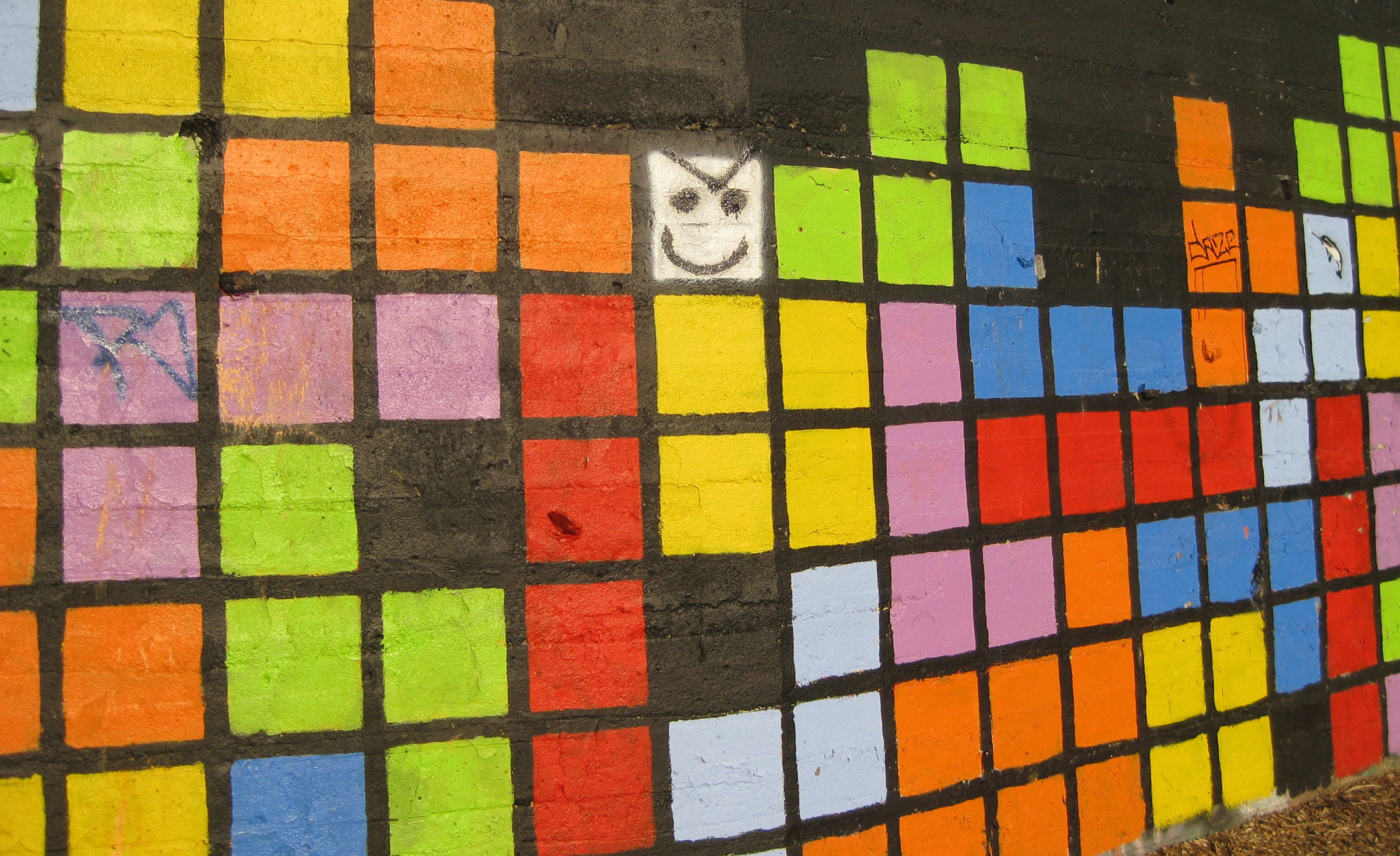2 We’re Only Making Plans for Learning
Planning and Teaching with UDL
By Jodie Black & Terry Greene, Fleming College
This Patch is about planning to teach, and then teaching, and then reflecting for next time. You may not have realized this yet, but our attempts to teach are much like our attempts to play Tetris. We have plans to maneuver students into just the right places so that they all fit nicely and then disappear. But when we play the game, they show up in all these different sizes and shapes and speeds and get jumbled up and the game is over and we reflect on what happened before trying again. This is actually turning out to be a terrible, mostly untrue analogy.
What is true is that we can expect students to arrive in different shapes and be moving at different speeds in different directions. Students are highly variable, and that variability isn’t a surprise – we can plan ahead for it. One of the ways to intentionally plan for learner variability without lowering standards is using the UDL guidelines. Another truth is that when we plan ahead for this expected variability, more students have a better chance of learning the awesome stuff you that have to teach.
Still, when we put our plans into action, sometimes things work as well as we’d hoped, and sometimes they pretty much tank. Whether putting our plans into action becomes a soaring success or a total bust, we’d better reflect on what happened in order to improve the next time. We’re taking the fundamental plan, teach, reflect pattern and adding a Universal Design for Learning (UDL) lens to it. Now, let’s let those pieces drop. Here are some UDL tips for:
- planning to teach,
- teaching that plan,
- reflecting on teaching from that plan, &
- applying what you learned for the next plan.
Phase 1: Making Plans for Learning
Think about these things when making your lesson plan:
- Start with a clear learning goal
- Create different ways to present this content
- Identify different ways students can express what they know
- Plan for relevant choices to engage students and increase motivation
- Plan an assessment that matches the learning goal
- Plan out opportunities to give students mastery oriented feedback
- Identify unnecessary barriers in your curriculum and instruction and remove them
Phase 2: Actually Teaching
Do these things when carrying out your plans:
- Be explicit about the learning goal
- Review what happened last class
- Communicate high expectations for all learners
- Demonstrate or model
- Explain images using words
- Show images to visualize explanations
- Transition between topics clearly
- Refer to your lesson plan openly
- Clarify and explain new vocabulary
- Guide students in making choices
- Provide Specific, timely and relevant feedback
Phase 3: The Post-Game Show
Reflect on how things went by answering some of these questions:
- What worked well about your lesson?
- What didn’t go as planned?
- Did the students meet the learning goals of the lesson?
- How do you know?
- How would you adjust the instruction next time you teach this topic?
- What are the students now ready to do next class?
Phase 4: Back to The Drawing Board
This is actually phase one again, so go back up there. We told you it’s a cycle!
The Authors of this Patch
- Jodie Black is a Teaching & Learning Specialist (a.k.a. pedagogical whisperer) in the Learning Design & Support Team at Fleming College. She also teaches in the Community Integration through Cooperative Education program. She has a B.A. in History, a B.Ed. in Special Education and, if you’re reading this after September 2017, she probably also has an M.Ed. in Curriculum.
- Terry Greene is a Learning Technology Specialist at Fleming College. He has a M.Sc. in Instructional Design & Technology from the University of North Dakota and a B.Ed. from The University of Alberta.

Featured photo: “angry square” flickr photo by calamity_sal https://flickr.com/photos/calamity_sal/5010274744 shared under a Creative Commons (BY) license



